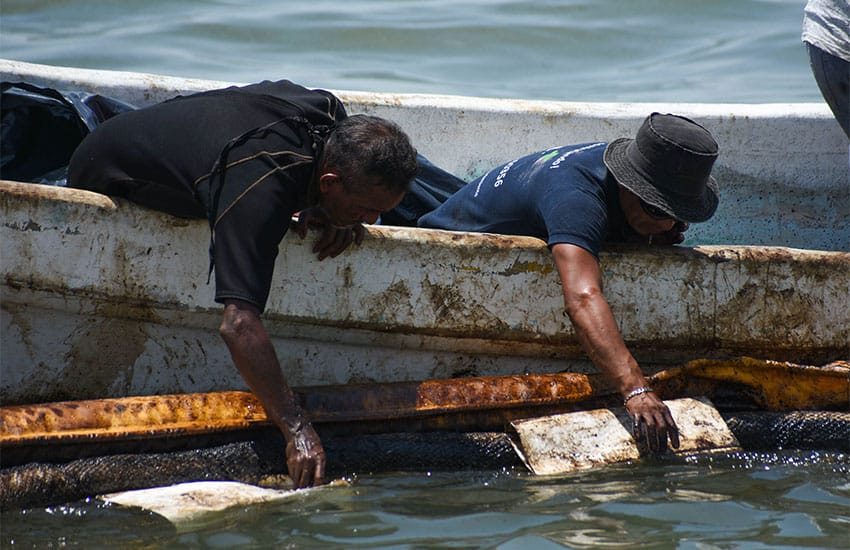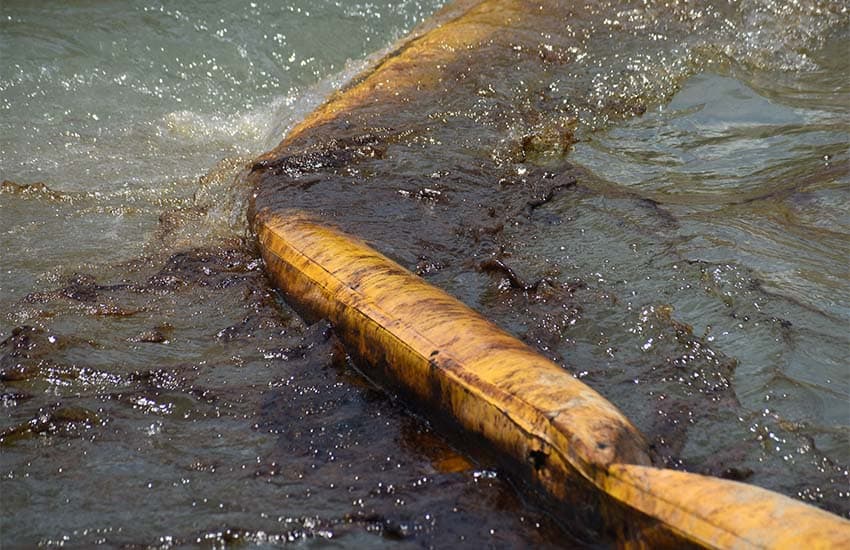Gulf oil slick found by NGOs due to natural causes, says Pemex

The CEO of state oil company Pemex said Wednesday that an oil slick in the Gulf of Mexico was mainly caused by a natural phenomenon rather than an oil spill and denied that it was as large as academics and nongovernmental organizations have claimed.
Using satellite images, researchers at the Institute of Geography at the National Autonomous University (UNAM) and the same university’s National Earth Observation Laboratory calculated that on July 12 there was a patch of oil covering 467 square kilometers in the Bay of Campeche.
More than 20 NGOs, including Greenpeace and the Mexican Center for Environmental Law, said last week that satellite images showed there was an oil slick of some 400 square kilometers — more than double the size of the city of Guadalajara — caused by an oil spill that the state-owned company had not informed the public about.
Pemex chief Octavio Romero told a press conference that the patch of oil seen in the images was primarily caused by natural seepage from ocean-floor vents in oil reserves in the Gulf of Mexico’s Cantarell field. He acknowledged that a second factor was a “small leak” of light crude from an aging underwater pipeline in the Ek-Balam field.
Pemex said last week that the NGOs’ claim of a 400-square-kilometer spill was a “bad faith estimate,” and that the spill’s true size was 0.06 square kilometers, or 365 barrels of oil.
Romero said that the oil seep consisted of light rather than heavy crude.
En redes sociales pescadores y ambientalistas de Tabasco, Tamaulipas y Veracruz reportan la aparición de los residuos de petróleo en sus costas y playas, producto del gigantesco derrame originado en la Sonda de Campeche pic.twitter.com/AtH9kQH9KN
— #NCSnoticias (@NCSCampeche) July 26, 2023
Fishing boats and environmentalists in Tabasco, Veracruz and Tamaulipas have been reporting spotting crude in their water and washing up on their beaches.
“With the currents and waves,” the oil seeping from the Cantarell field — estimated to be 387 barrels per day — “is incorporated into the marine environment,” he said.
Romero said that the National Research Council in the United States has concluded that seepage is the cause of 46% of oil that leaks into ocean water on an annual basis.
The Pemex chief said that if the oil slick was as large as claimed by academics and NGOs, the disaster would be much worse than the 1989 Exxon Valdez oil tanker spill off the coast of Alaska.
“If an area of 467 square kilometers is considered, … Pemex would have had to have spilled 3 million barrels. If this were true, … the event … would be 12 times more catastrophic than what happened with the Exxon Valdez ship,” Romero said.

He also said that the navy flew over the Gulf of Mexico off the coast of Campeche, Tabasco, Veracruz and Tamaulipas on July 18 but saw no oil patch.
However, in the last few days, crude has been spotted in the Bay of Campeche in aerial photos and has been washing up on some Gulf of Mexico beaches in Tabasco, Campeche and Tamaulipas, prompting local cleanup efforts.
Gabriel Gómez, one of the UNAM academics associated with the 467-square-kilometer estimate, said in a statement when they released their report that ocean currents would likely take the slick east-northeast to the Gulf coast in Veracruz, Tamaulipas or the United States.
Romero said that crude that has recently washed up on Gulf of Mexico beaches in Tabasco and Tamaulipas didn’t come from the pipeline leak. He insinuated instead that seepage was to blame but didn’t explain why the quantity of oil reaching beaches had appeared to increase recently.

Romero said that the delay in repairing the leak — which started in early July during the installation of new pipelines — was because Pemex didn’t initially have the required tools on hand. The firm said that it reported the leak to the Security, Energy and Environment Agency (ASEA) on July 6.
The state oil company CEO criticized the media’s reporting on the spill, saying that local outlets had “distorted” the news.
The pipeline leak began several days before a large fire broke out on an offshore Pemex platform in the Cantarell field. Romero said that the fire, which killed at least two workers and injured eight, was linked to a subcontractor’s failure to follow Pemex protocols.
“I can’t speak about it much because analyses of the cause of the accident are still being done, but it wasn’t due to a lack of maintenance but rather due to the failure [to do] a job that a company contracted by Pemex [Cotemar] had already scheduled,” he said.
A Facebook user posted photos of dead fish and smatterings of apparent crude on Baghdad Beach in Tamaulipas.
With reports from EFE, Infobae, Reforma, El Heraldo de México, Proceso, Reuters, AP and El Financiero
Source: Mexico News Daily

